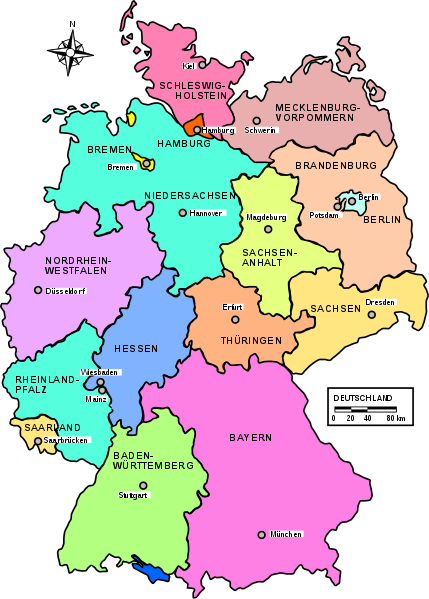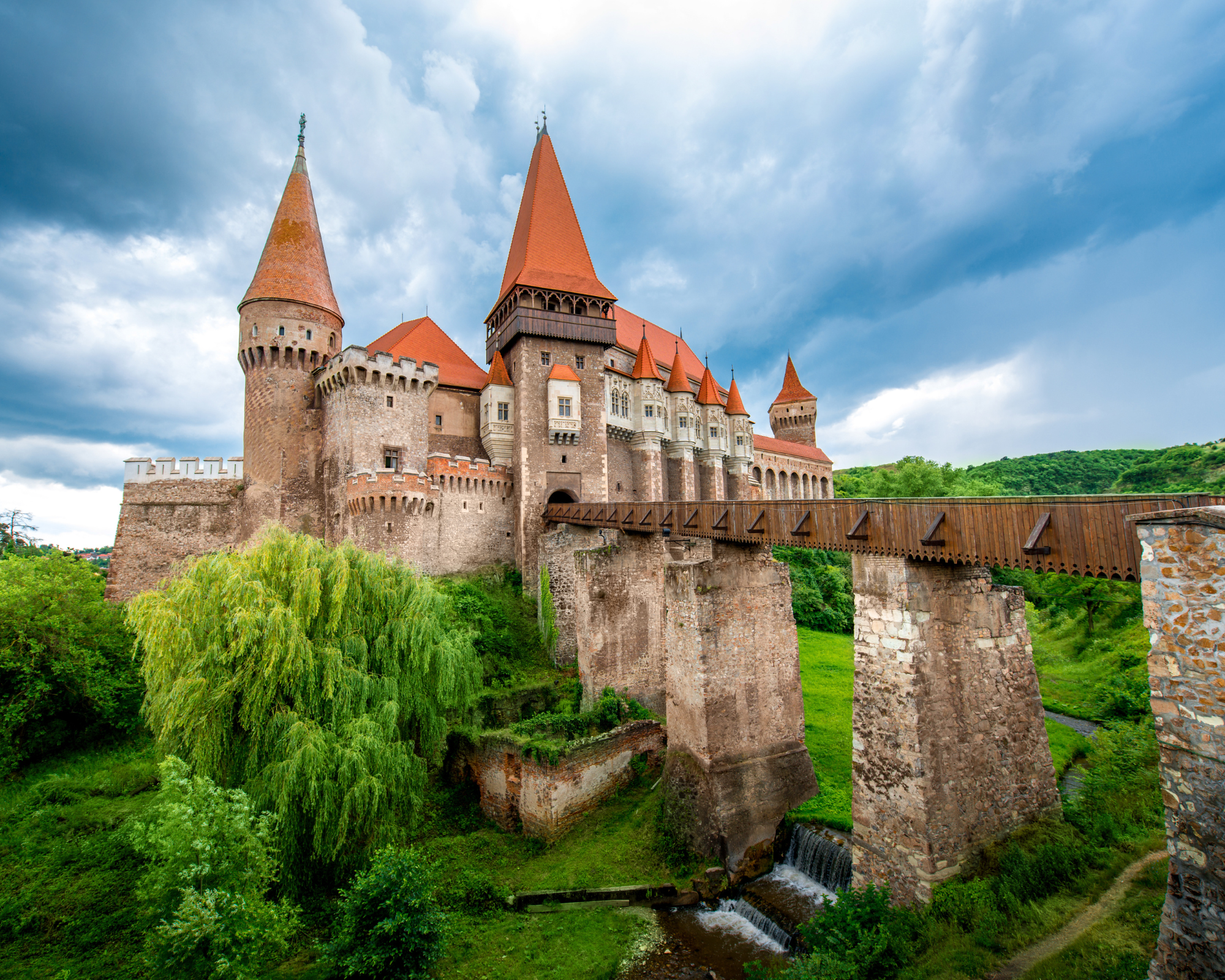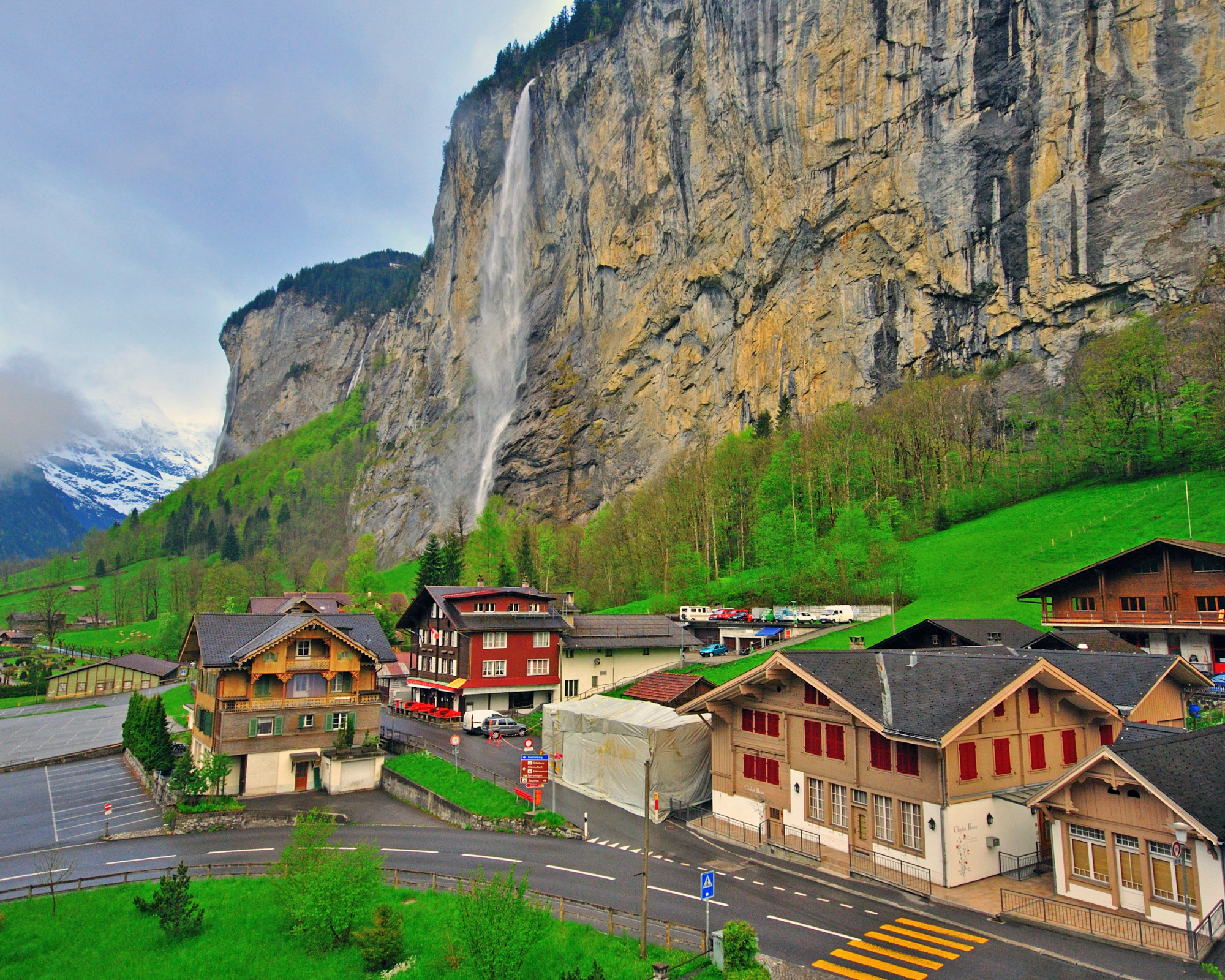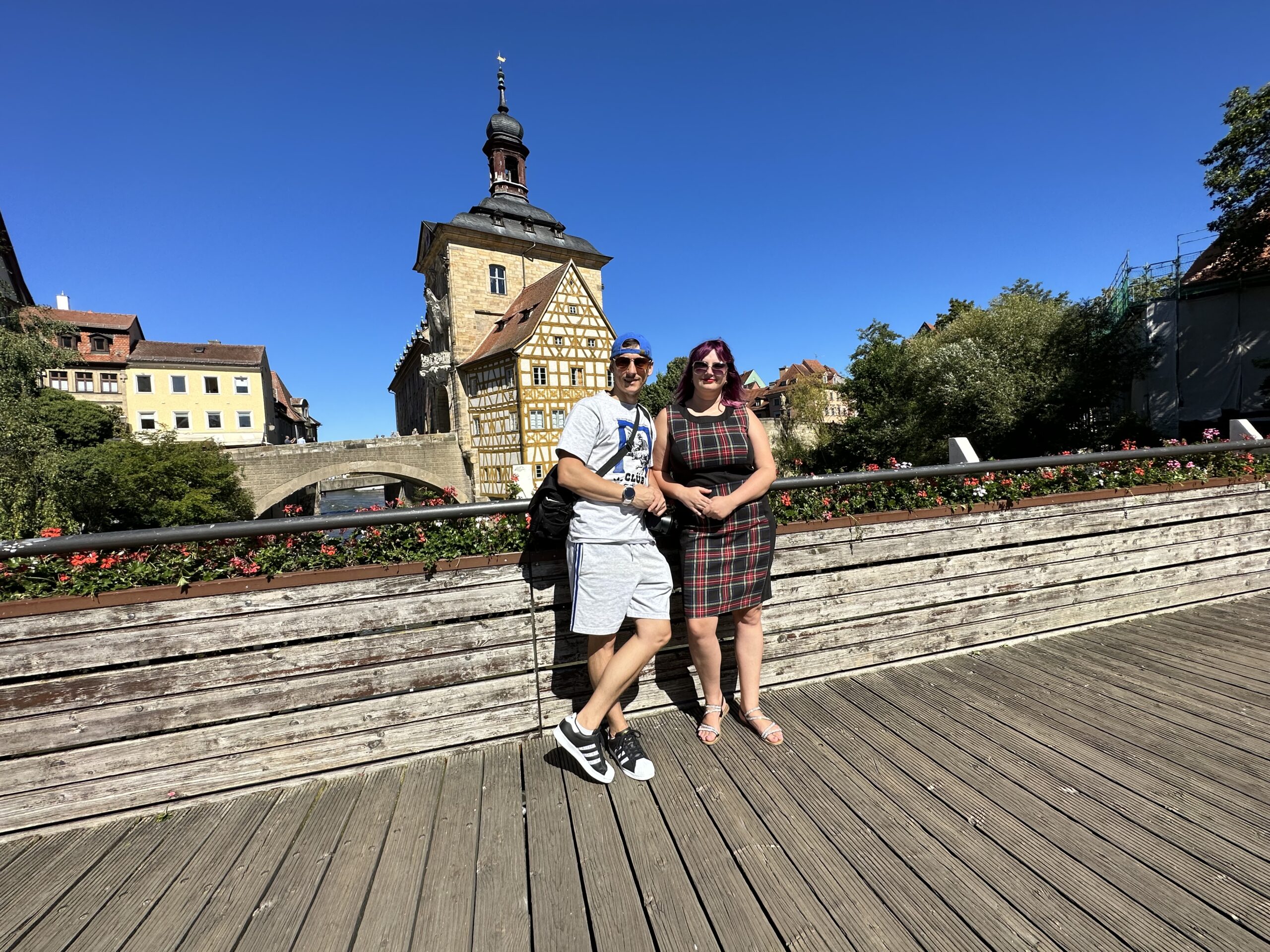
Town of Bamberg: Germany’s Hidden Gem Unveiled 2024
Town of Bamberg: Germany's Hidden Gem Unveiled 2024
We departed Munich, Germany, almost eleven years ago. We have been able to explore a lot of this amazing country thus far; in addition to the major tourist destinations, we have also seen picturesque lakes and waterfalls. In addition to this overview of Germany, we also wrote on each city, lake, and small town we visited, as well as suggestions for German restaurants. We encourage you to browse the other articles about Germany if you’d like more information about these stunning locations.
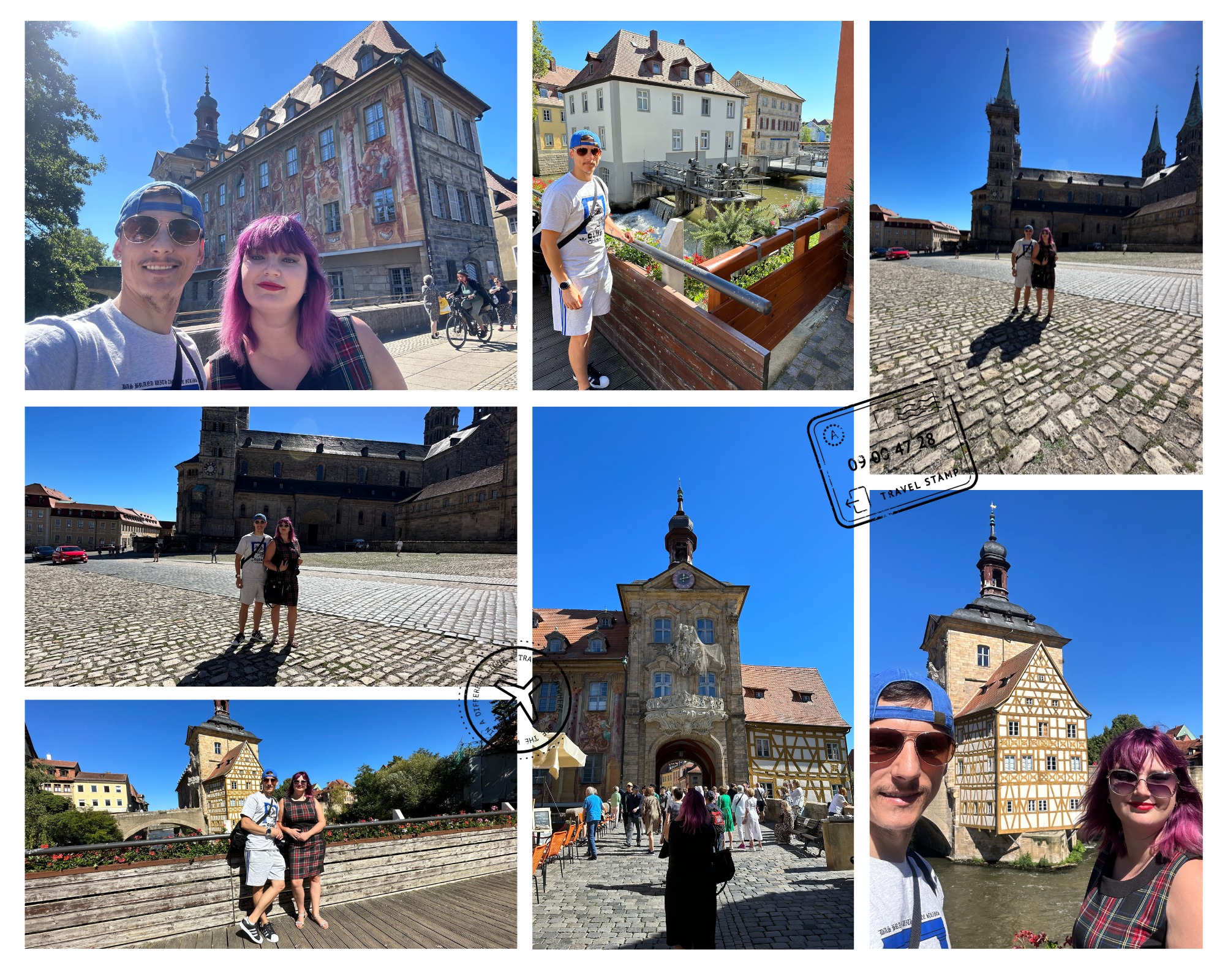
Source : Traveldreamdiary.com
Informations
Language: The official language is German.
Currency: Euro
Food Prices: Meal in a cheap restaurant=14 EUR, Meal for 2 People, Mid-range Restaurant=50 EUR
You can find more information about the visa here.
Notice: Several of the links below are affiliate links, which means that if you click over and make a purchase, I will get a commission at no extra cost to you. Here is a link to our complete affiliate disclosure.
Things to do
Bamberg Cathedral
Constructed in the 13th century, Bamberg Cathedral is a church located in Bamberg, Germany. The Bamberg Archbishop resides at the cathedral, which is governed by the Roman Catholic Church. The cathedral has been a part of the “Town of Bamberg” UNESCO World Heritage Site since 1993. Heinrich II, King (and eventually Emperor) of Germany, founded it in 1002, and it was dedicated in 1012. Henry II and his wife Cunigunde’s mausoleum make up the only canonized imperial couple’s remains in the cathedral. There is only one papal tomb in Germany and the only one north of the Alps here, which is the tomb of Pope Clement II (1005–47).
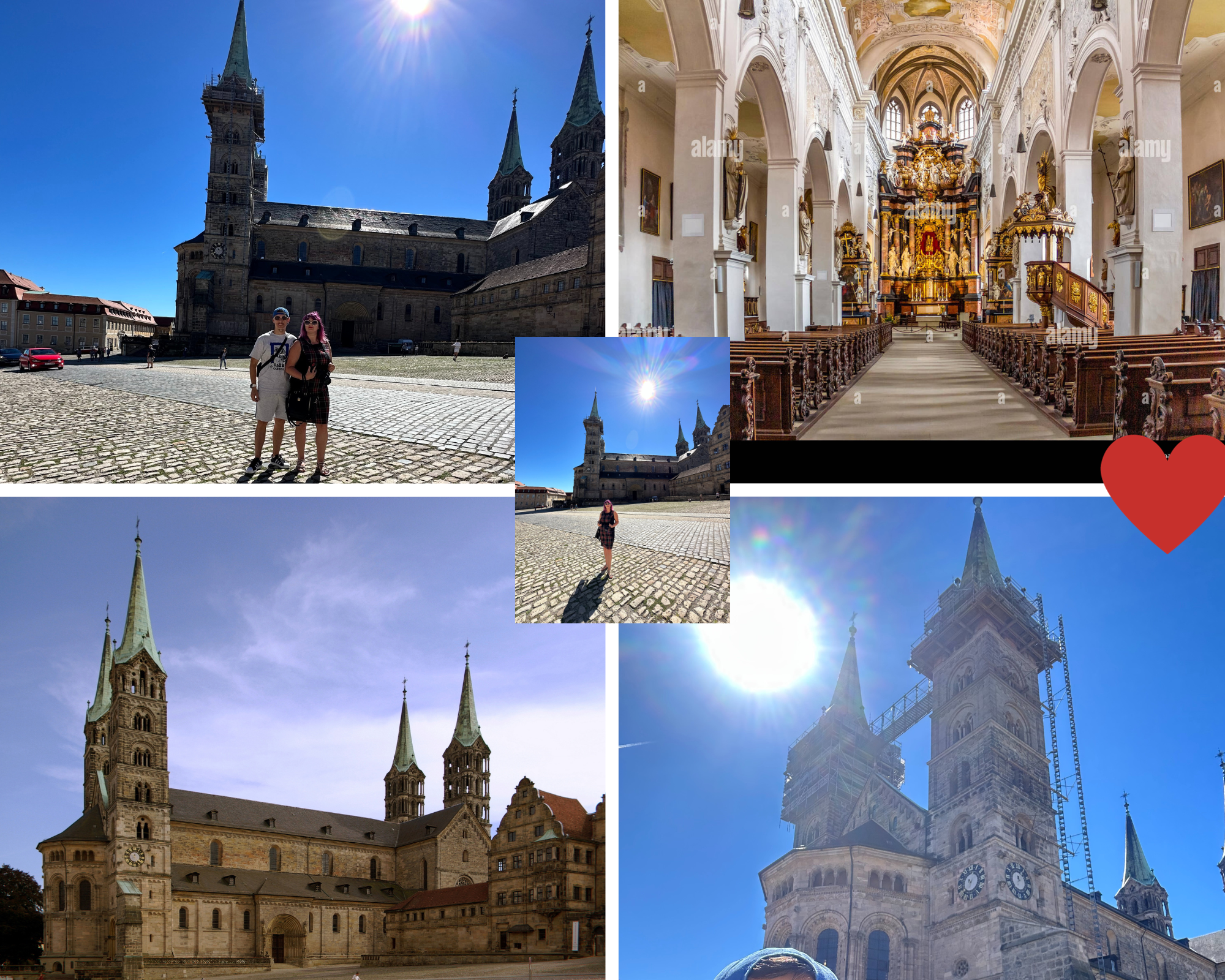
Source : Traveldreamdiary.com
Altes Rathaus
One of the most significant structures that defines Bamberg’s old city core is the Old Town Hall. It is situated in the left arm of the Regnitz, between the island town and the mountain town. The spot in question “…marks the old border between the episcopal mountain town and the bourgeois island town and clearly shows the Bamberg bourgeoisie’s striving for power.” The Upper and Lower Bridges, which were once private bridges, lead away from the landmark, which is situated in the Regnitz River. Inside is the Ludwig Porcelain Collection, which is part of the Bamberg City Museums and is among the biggest of its kind in Europe.The town hall’s current look was created by rebuilding it between 1461 and 1467 after it was originally mentioned in 1387. The Gothic style was the primary influence during this building phase.
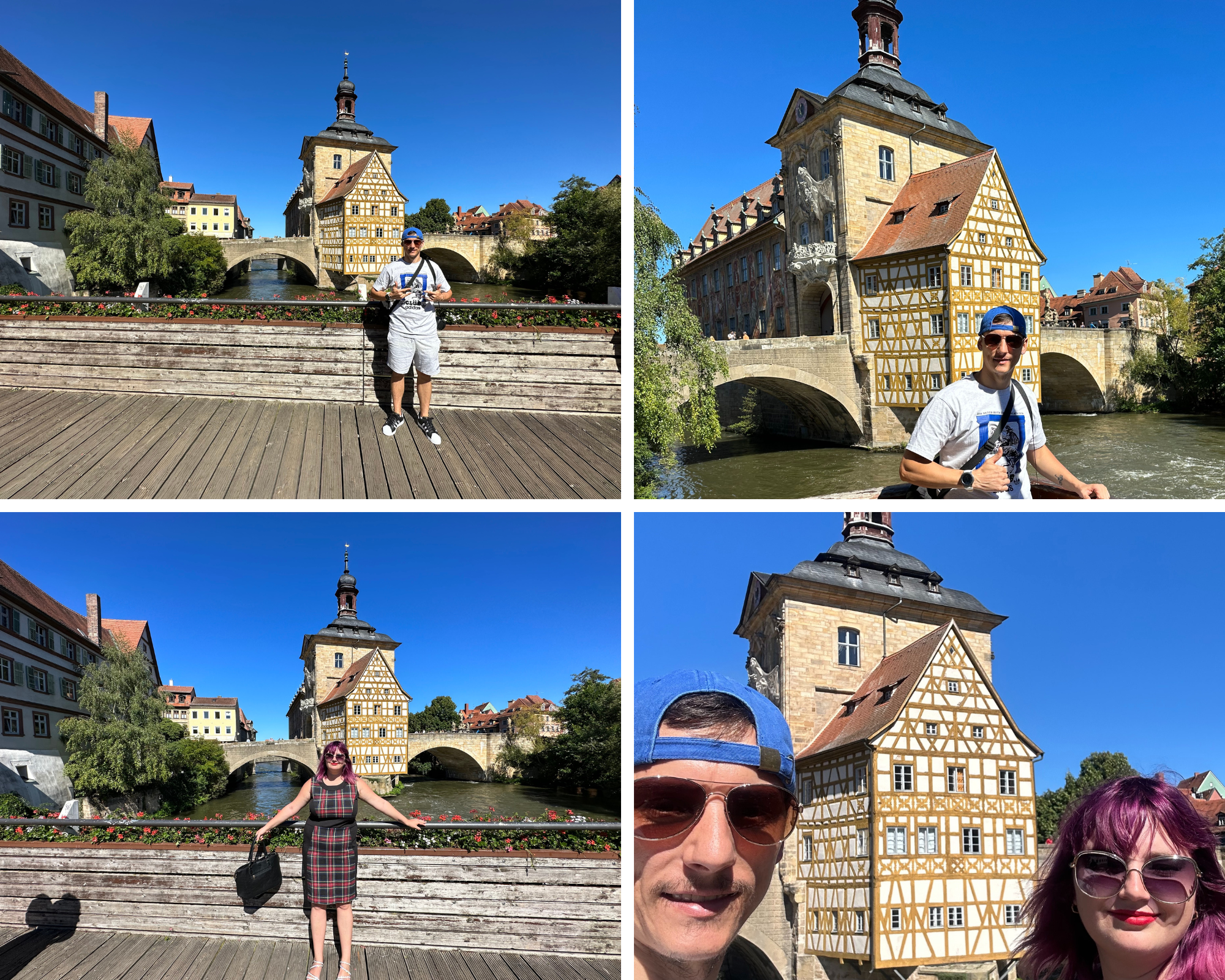
Source : Traveldreamdiary.com
Neue Residenz Bamberg
On Cathedral Square in Bamberg, Upper Franconia, stands the multi-winged, listed structure known as The New Residence. It took the place of the old court across the square as the bishop’s palace for the prince-bishops of Bamberg starting in 1604. The State Gallery and Bamberg State Library are currently housed in the sandstone complex. You can see the rooftops of the town and St. Michael’s Church from the New Residence’s rose garden.
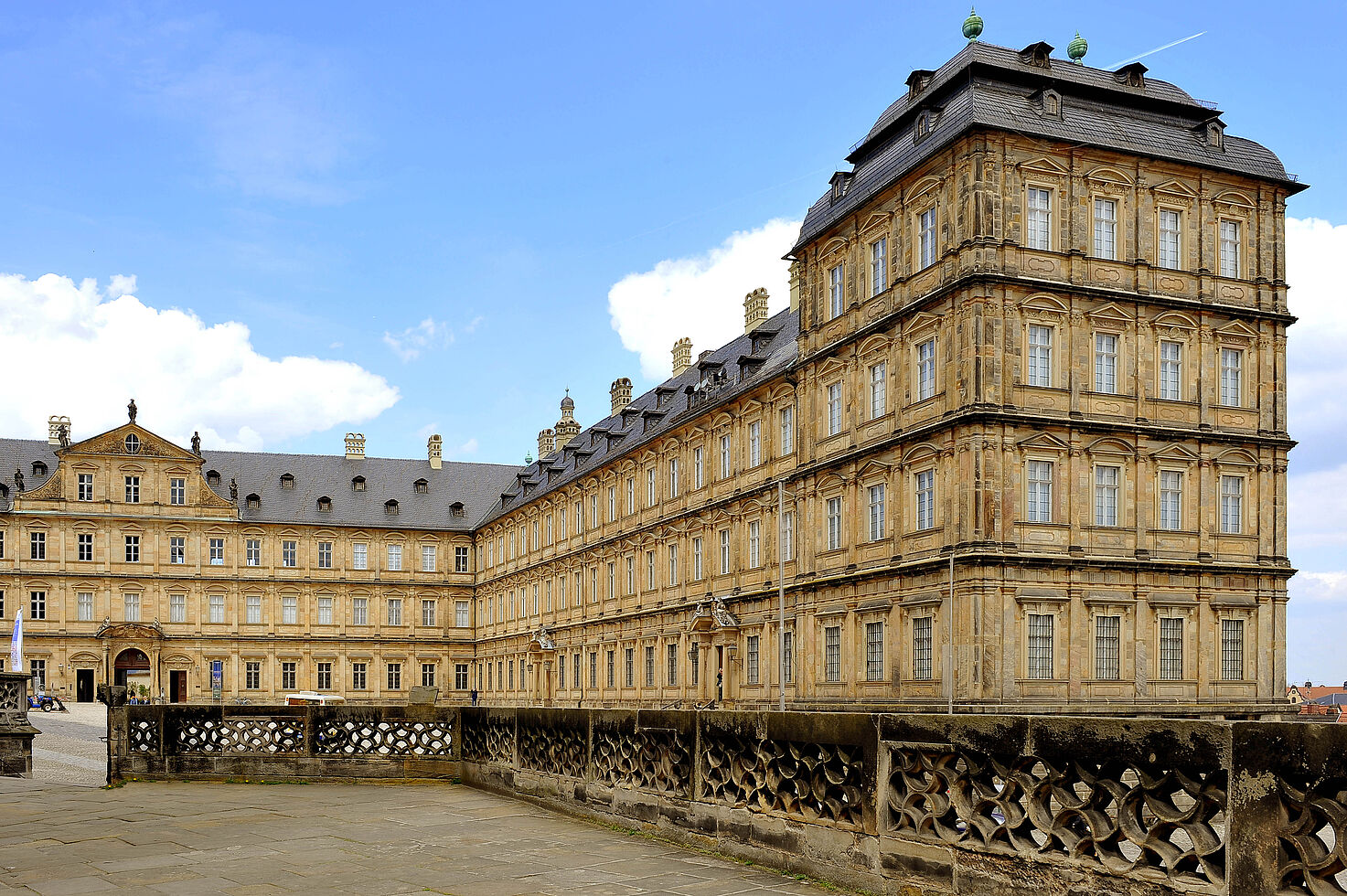
Source : Facebook
Bamberg old town
Bamberg, sometimes called the Rome of Franconia, was a center of episcopal and imperial authority for over a millennium. Situated on seven hills, the picturesque countryside envelops the city. Steeped in medieval and baroque grandeur, the town is a singular and immaculately preserved gem of urban planning, dominated by its imperial cathedral. Three historic districts make up Bamberg’s well-preserved old town: the market gardener’s town, the island town, and the episcopal town. Each of the three, which are included in the UNESCO World Heritage list, offers an intriguing illustration of how towns in central Europe were constructed using the fundamental plans created in the early Middle Ages. In 1007, Bamberg was granted special status as Heinrich II transformed the town into a center of it became the focal point of the recently established diocese, transforming it into a second Rome, with episcopal and sovereign power.
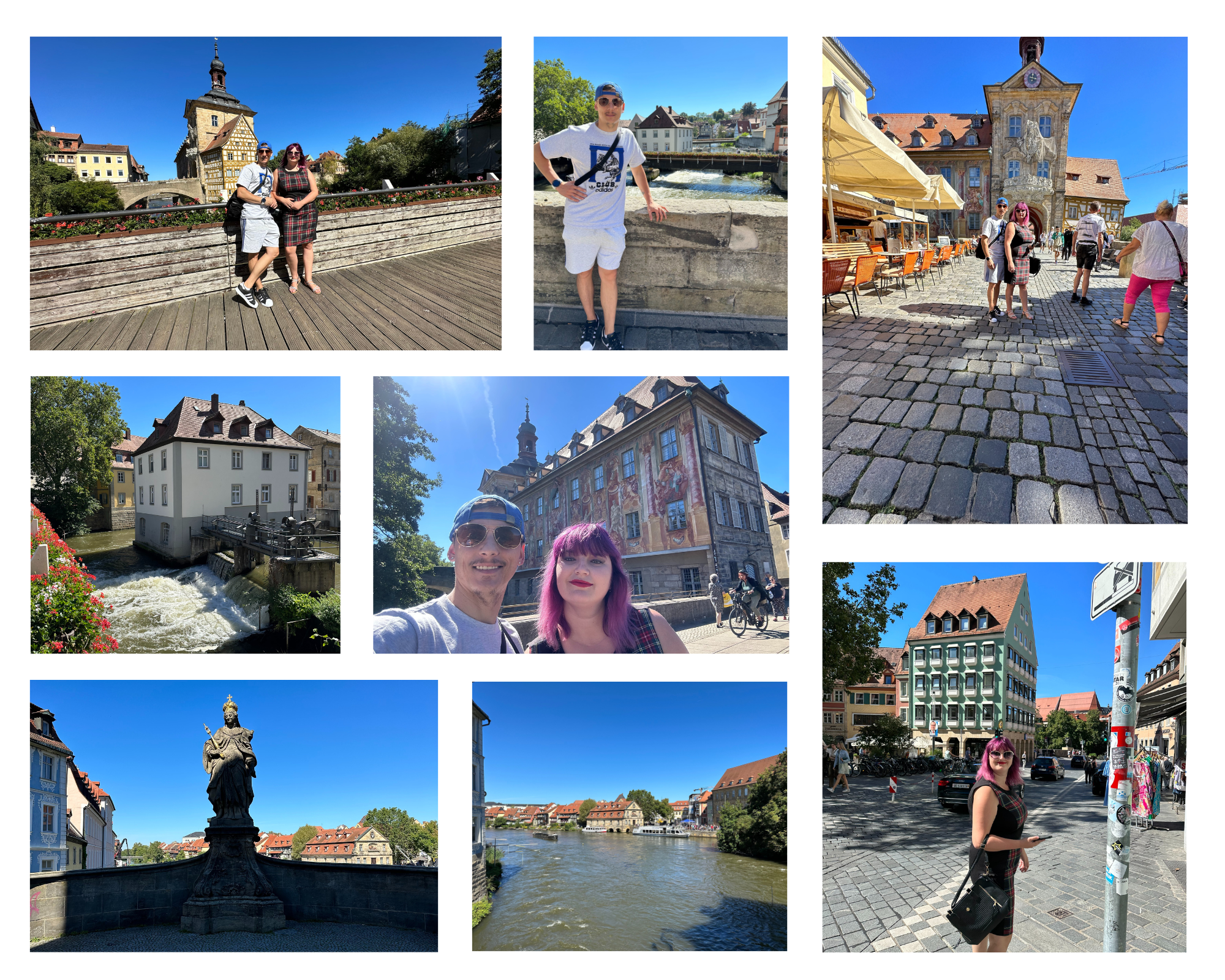
Source : Traveldreamdiary.com
Old Court
Emperor Heinrich II’s former residence, Castrum Babenberg, served as the model for the Old Court. It served as the bishop’s home once the bishopric was established in 1007. On this location, a one-story palace was constructed after the 1185 Cathedral fire. It was replaced in the 16th century by a magnificent German Renaissance structure. The sculpture “Beautiful Gateway” by Pankras Wagner is striking because it features personifications of the Main and Regnitz rivers among reliefs of the Mother of God, St. Peter, St. George, St. Kunigunde, and St. Heinrich. The half-timbered buildings lining the inner court, which is lovely, are accessible through the doorway.
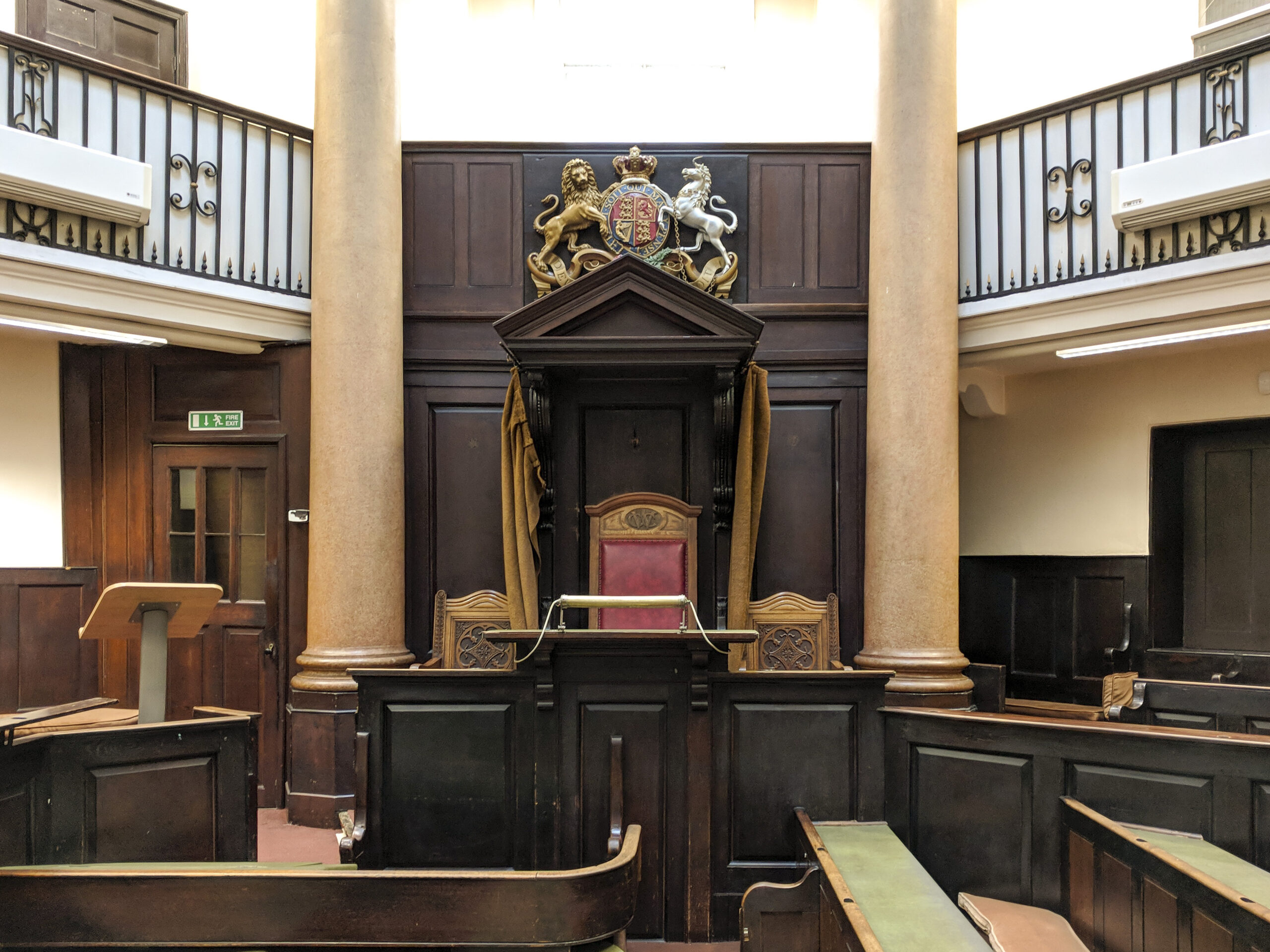
Source : Facebook
Michelsberg Monastery
Former Benedictine abbey Michaelsberg Abbey, also known as Michelsberg Abbey or St. Michael’s Abbey, Bamberg (German: Kloster Michaelsberg or Michelsberg) is located in Bamberg, Bavaria, Germany. The almshouse Vereinigtes Katharinen- und Elisabethen-Spital, which remains as a retirement home, occupied the premises when it was dissolved in 1803. The Michaelskirche is still the name of the old monastery church. The structures are a part of the “Town of Bamberg” UNESCO World Heritage Site. The church has been shuttered for restoration since 2016 and will be closed for some time to come.One of the hills above Bamberg, the Michaelsberg, was named after the abbey. It was part of a T-shaped cross in the topography of Bamberg, along with the cathedral and the monasteries of St. Stephan and St. Gangolf.
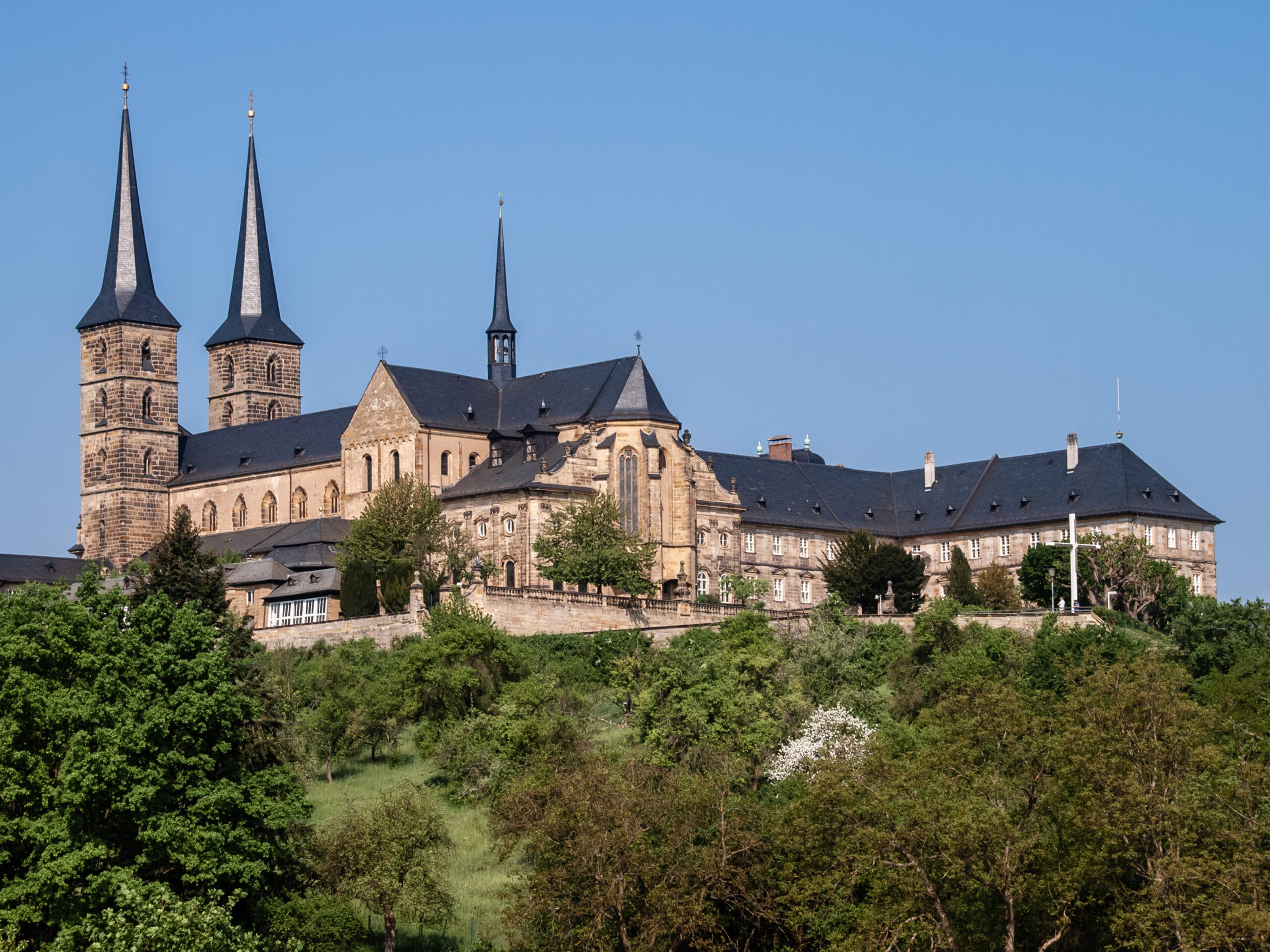
Source : Facebook
Klein-Venedig
Klein-Venedig is the name of one of Bamberg’s former fishing villages.It is made up of a group of old homes from the 17th century located on the Bamberger Regnitzinsel directly on the edge of the left arm of the Regnitz. It serves as the backdrop for the annual August fishing derby, known as the Sandkerwa (Sandkirchweih), which is the largest Volksfest in the Regnitz.Long wooden beams can be found in several of the houses, which the fishermen used to support nets and fishing equipment so they could trocknel them over time.Since most of the houses there, if any, had balconies, they managed to provide the necessary space for the radiators.Throughout the history of the city district, there were a few overschwemmings due to its close proximity to Regnitz.One of the strongest materialized in 1784.Such disasters are prevented in the modern day by a city-built wall.
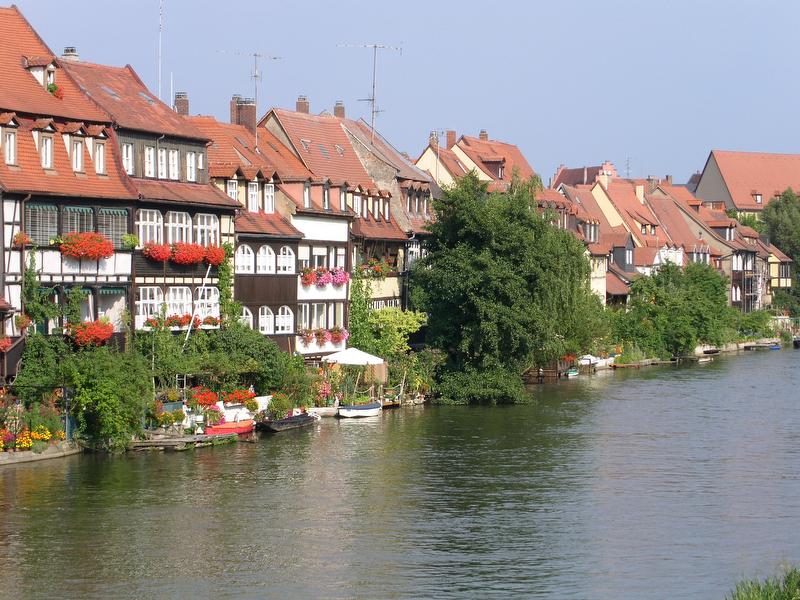
Source : Traveldreamdiary.com
Schloss Seehof
Architect Antonio Petrini constructed Seehof Castle, a former hunting lodge and summer home of the prince-bishops of Bamberg, between 1687 and 1696. Currently owned by the municipality of Memmelsdorf, the castle is situated approximately five kilometers northeast of Bamberg. A sizable garden that was originally created in the Rococo style encircles it. The facility takes up about 21 hectares of space. Pond farming for the purpose of rearing carp is practiced nearby. The Bavarian state bought the castle and gardens in 1975.Rococo artists such painter Johann Joseph Scheubel the Elder, cabinetmaker Ferdinand Hundt, fresco painter Giuseppe Appiani, and plasterer Johann Jakob Vogel from Wessobrunn all had an impact on interior design. Ferdinand Tietz was the main artist behind the garden art.
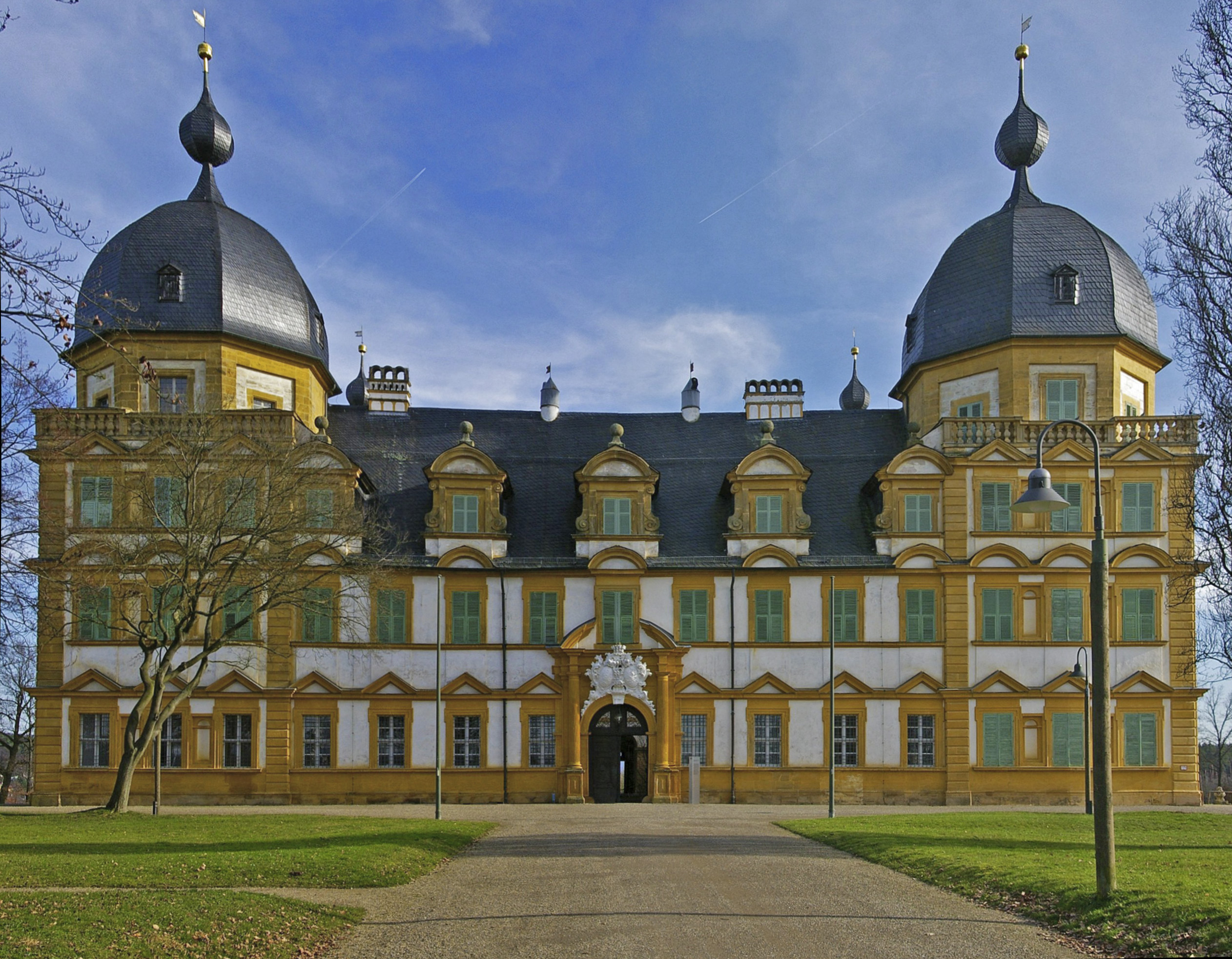
Source : Facebook
Our Lady's Parish Church
Considered “Upper Parish” by the locals, this is Bamberg’s sole fully gothic church. Fifty years after the plain nave, the late Gothic choir (whose foundations date from 1375) and the upper choir (supported by flying buttresses) were built. The bridal portal, with its gothic sculpture, is a noteworthy monument. The church’s interior, which has two aisles and a nave, is decorated with baroque furnishings. The picture “The Ascension of Mary” by Tintoretto is one particularly valuable work of art. Images courtesy of Bamberg and Peter Eberts
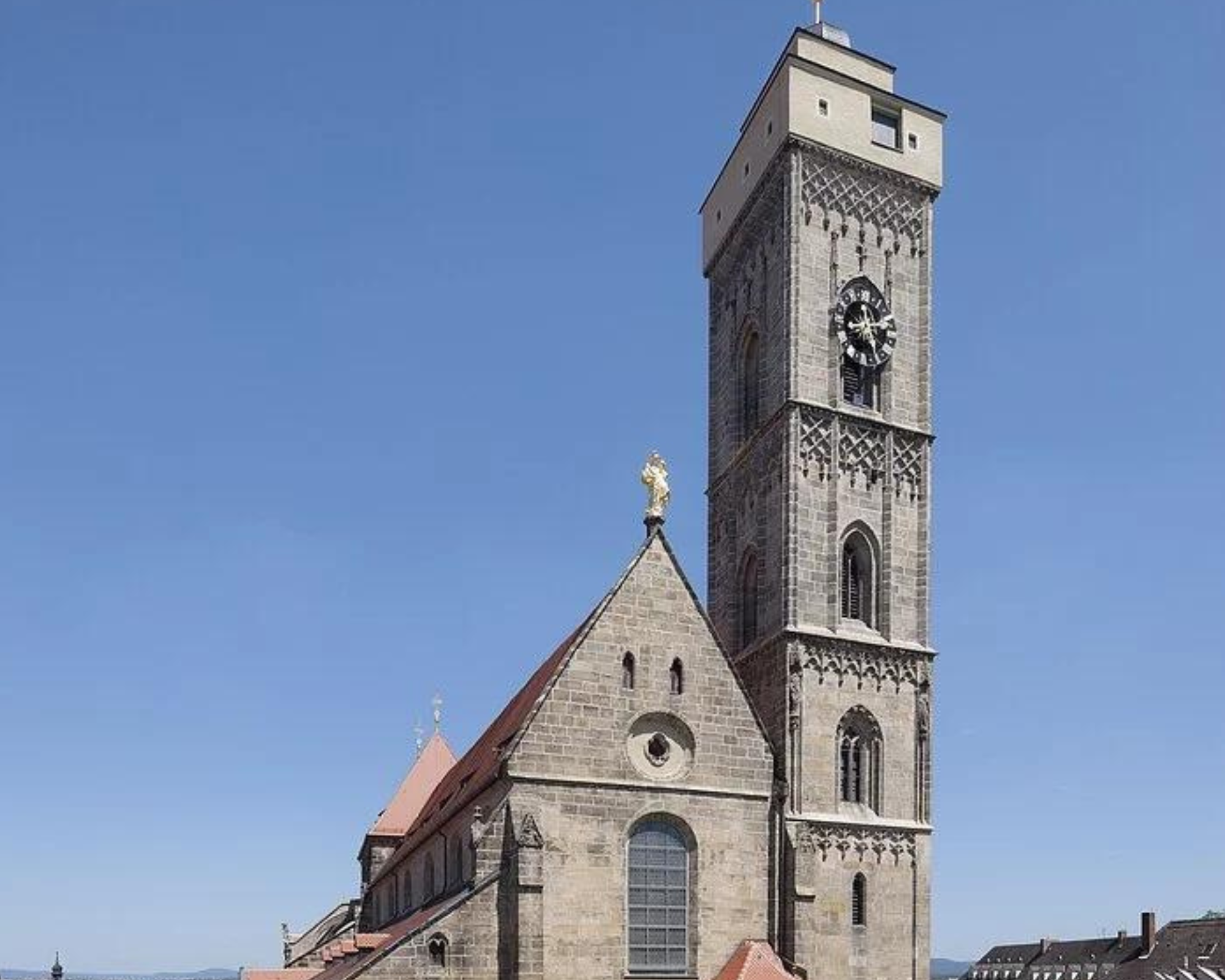
Source : Facebook
St. Martin's Church
On the location of today’s St. Martin’s Church, the Carmelite Order monastery in the Au, with its monastery church dedicated to St. Laurentius, was situated starting in 1248. In exchange, the Bamberg diocese’s seminary received this location in 1589. The former Cistercian monastery of St. Maria and St. Theodore on Kaulberg, abandoned since 1548, was taken over by the Carmelite Order. There is still monastic life here.The previous Carmelite convent was taken over by the Jesuits in 1611 when they were summoned and settled in. The east-facing church of the former Carmelite monastery was dismantled and work on a new church began in 1686 after the purchase of various properties on the market. The present church’s west-facing choir is situated about where the east-facing Carmelite Church’s choir once stood. The chief builders were the Dientzenhofer brothers, Georg and Leonhard. For this, Georg Dientzenhofer was brought in from Prague. Leonhard, Georg’s brother, assumed construction management following Georg’s death.
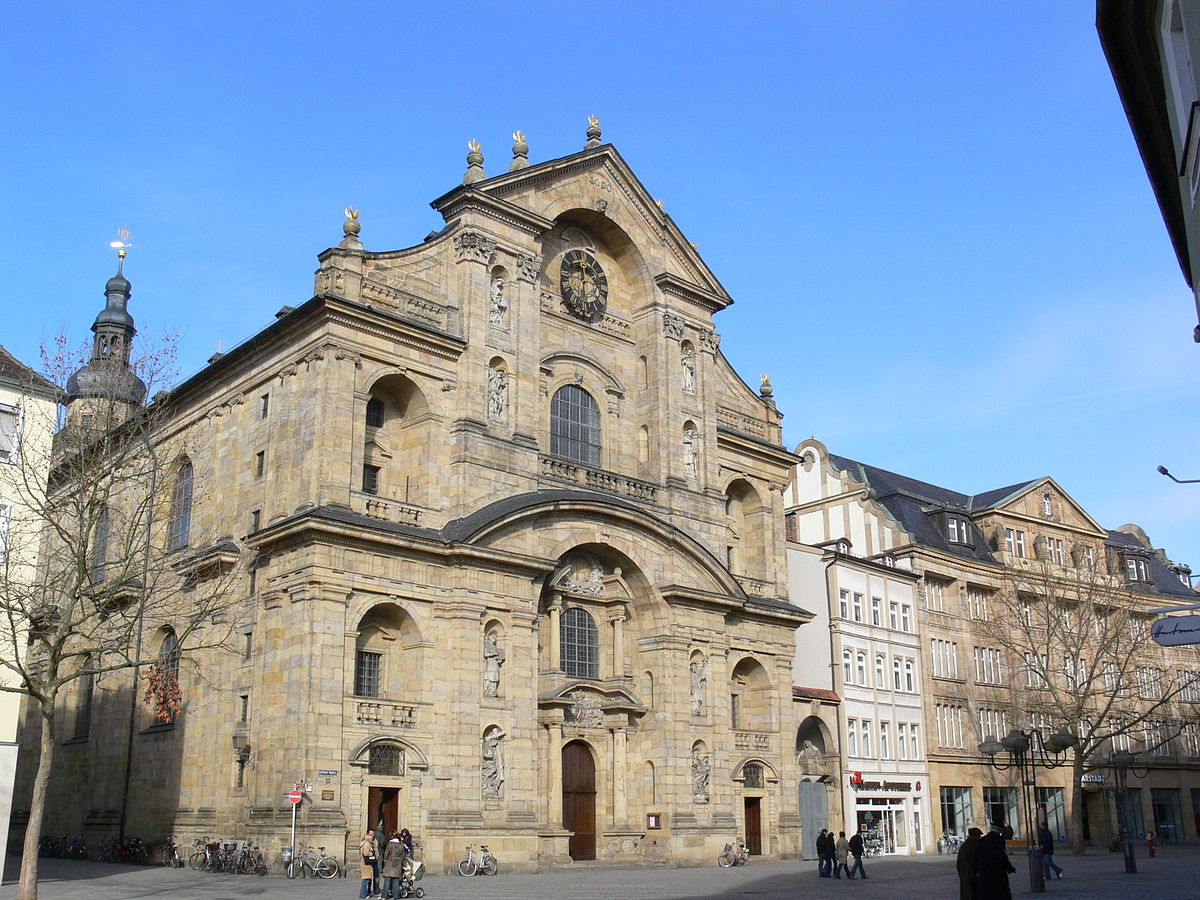
Source : Traveldreamdiary.com
Altenburg Castle
This article is about the castle in Germany’s Upper Franconia. Altenburg (disambiguation) might be used for other purposes. Alternate Eastward view of Altenburg Castle | copyright OpenStreetMap | MapWikimedia General details Kind of hill fortress Cities or townsIn Bamberg Germany is the nation Overlooking the town of Bamberg in southern Germany, the Altenburg is a castle perched on the highest of the town’s seven hills. It is situated in the Bavarian region of Upper Franconia and is at least 1109 years old.The Altenburg was first mentioned in 1109, though it’s more likely that it replaced an earlier palisade fortification. It was originally used as a “Fliehburg,” as they say in German. Mostly used for city defense and as a refuge for locals to retreat to in an emergency, this fortress was not routinely occupied. The fortress was purchased by the Bamberg “Fürstbischöfe,” or sovereign bishops of Bamberg, in 1251. The bishops lived there from 1305 to 1553.The fortress was destroyed by fire by Albert Alcibiades’ army in 1553 during the Second Margrave War, which took place in Brandenburg-Kulmbach. The castle was then utilized as a jail for a while after that.Adalbert Friedrich Marcus, a physician from Bamberg, bought the crumbling castle in 1801, and he completely renovated it. Between 1808 and 1813, the author E. T. A. Hoffmann, a friend of Marcus, was so fascinated to the castle that he often spent extended periods of time in one of the wall towers.
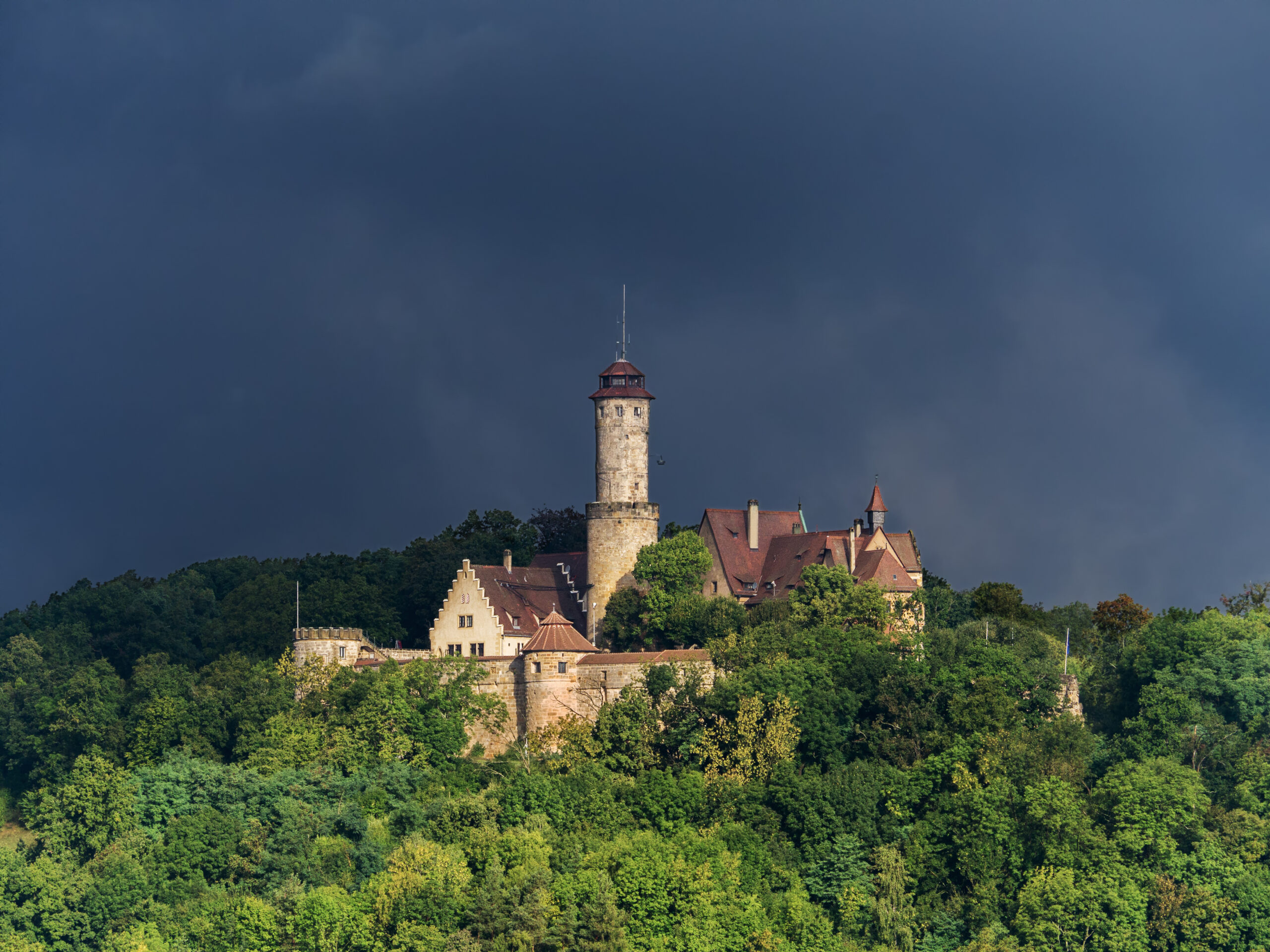
Source : Facebook
Franconian Brewery Museum
Master brewers through beer history created the support group “FränkischesBraumuseum in der Bierstadt Bamberg e.V.” out of appreciation for brewing tradition and clean, fresh beer. We take you on an exciting trip from straw to glass and showcase real beer culture via more than 1,850 displays. The following real departments will astound you: cooperage, filtration, barrel and bottling, ice cellar, fermentation and storage cellar, brewhouse, and malthouse.
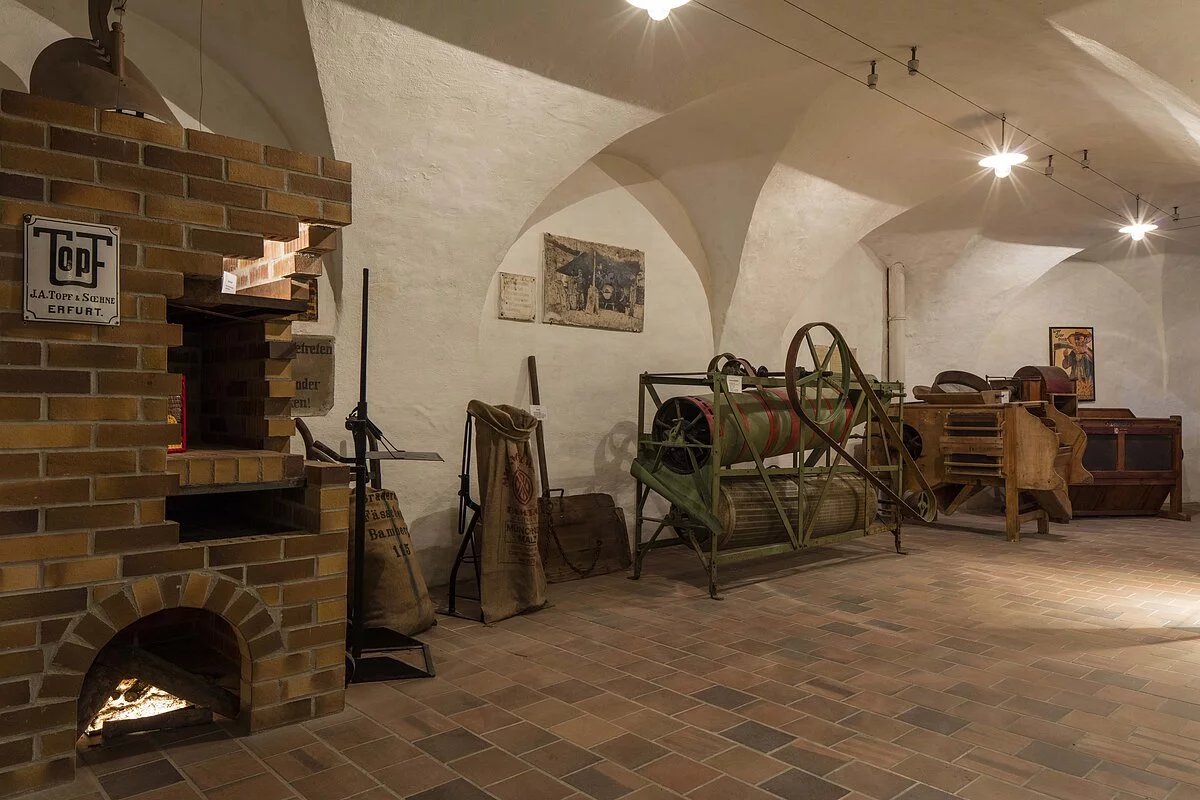
Source : Facebook
Gärtner- und Häckermuseum
The distinct cultural landscape of the inner-city garden areas was the reason behind Bamberg’s 1993 designation as a “World Heritage Site.” The only museum in southern Germany devoted to the history, culture, and commercial inner-city life of wine and vegetable gardeners is the open-air museum in Bamberg’s gardening town. Located in a typical 1767 gardener’s home, it allows guests to experience what it was like to be a gardener in the year 1900.
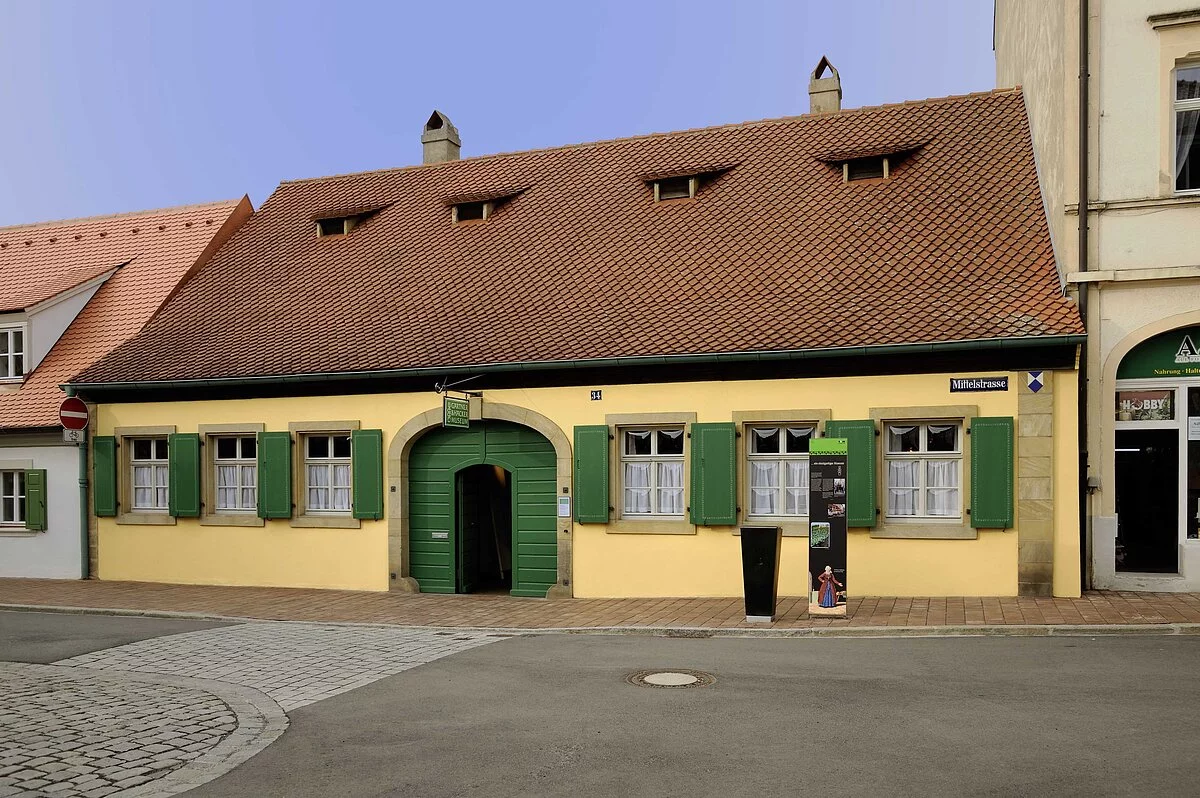
Source : Facebook
Book your perfect vacation!
Vacations: We are happy that we have the opportunity to work with the most famous companies in the world, we always order our vacations from these companies and we have never been disappointed: Check 24, Trivago, Trafalgar, TravelUp, Insight Vacations, Explorer Fernreisen.
Where to stay
Hotels, bed & breakfasts, and guesthouses, regardless of location—in the center of town, close to a lake, or amid natural surroundings. We were able to identify the top companies providing the best hotels: Booking.com, Trip.com, TravelUp, esky, Hoteltopia, Millennium Hotels and Explorer Fernreisen.
Where to eat
Traditional Food and
Desserts to try in Germany
Wurst: In Germany, there are about 1,500 different types of sausage. These are made using a variety of ingredients and special spice combinations in a multitude of ways. Rouladen is a classic German dish made with thinly sliced cooked beef or veal wrapped in bacon, onions, mustard, and pickles. In particular, the south of the nation loves spätzle. Made from egg and wheat flour, these delicate egg noodles are frequently served with roasted onions and Käsespätzle cheese on top.
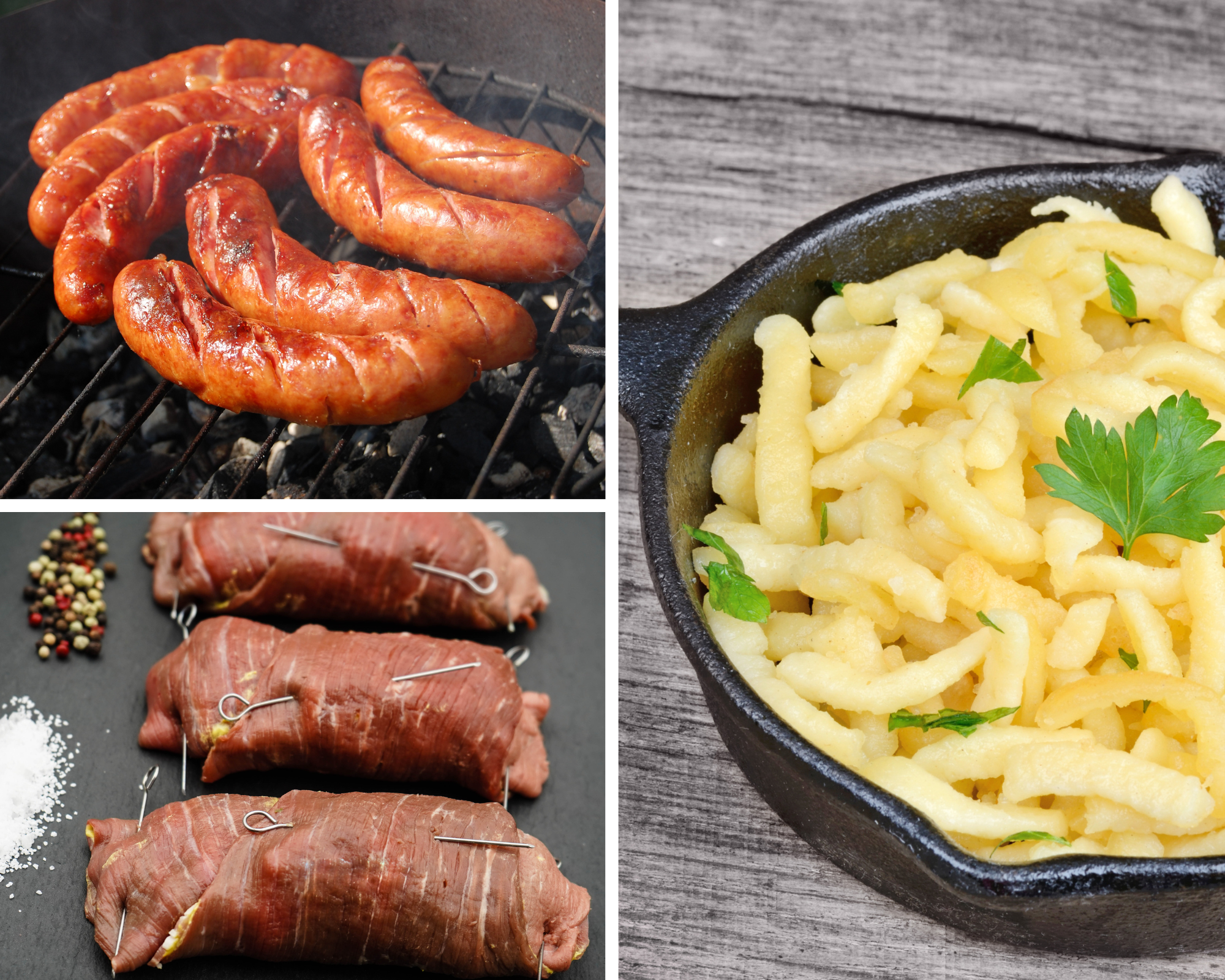
Photo Source : traveldreamdiary.com
The term “one pot,” or “eintopf,” describes the method of cooking rather than the ingredients. Nevertheless, the majority of dishes call for the same fundamental components, which include fish, poultry, cattle, or pig together with vegetables, potatoes, or legumes. Known as “sour” or “pickled” roast, sauerbraten is a national dish of the nation. A variety of meats can be used to prepare a pot roast. The meat is marinated for up to ten days in a mixture of wine, vinegar, spices, and herbs. Kartoffelpuffer are thin, pan-fried pancakes made with flour, egg, onion, and spice combined with shredded or ground potatoes.
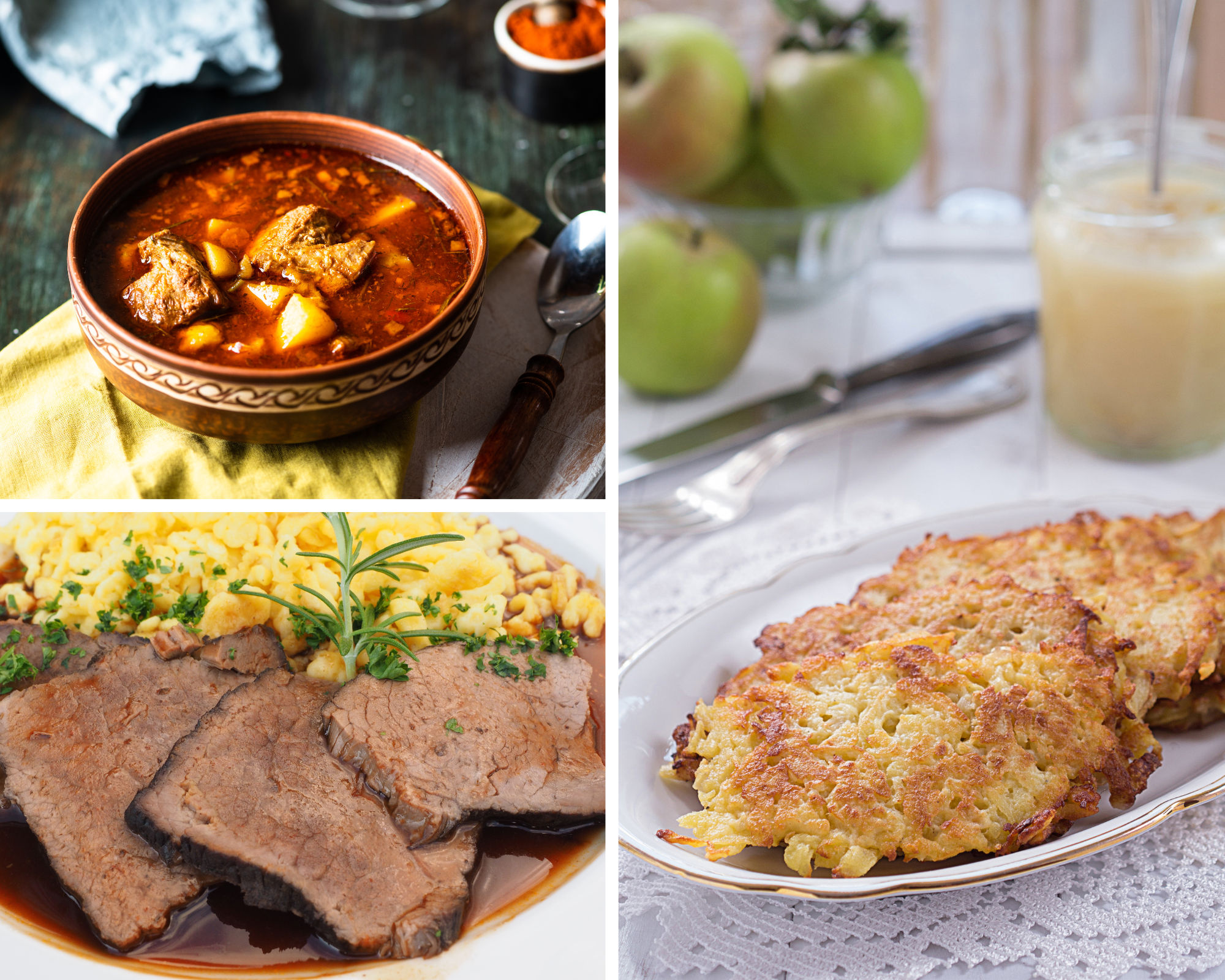
Photo Source : traveldreamdiary.com
Potato dumplings are known in German as “kartofflelknödel.” The dumplings’ foundation is made of potatoes, but you can customize it with any spices and croutons you desire. Maultaschen are little dough sheets stuffed with different fillings. While some individuals enjoy adding smoked meats, such as sausages, others prefer ground beef. Herbs and onions can also be added to your dumplings. Naturally, all foodies and travelers have heard of these delicacies, but these are unique to Germany and must be sampled while visiting: pretzels, pork schnitzel, potato salad, fried potatoes, and currywurst.
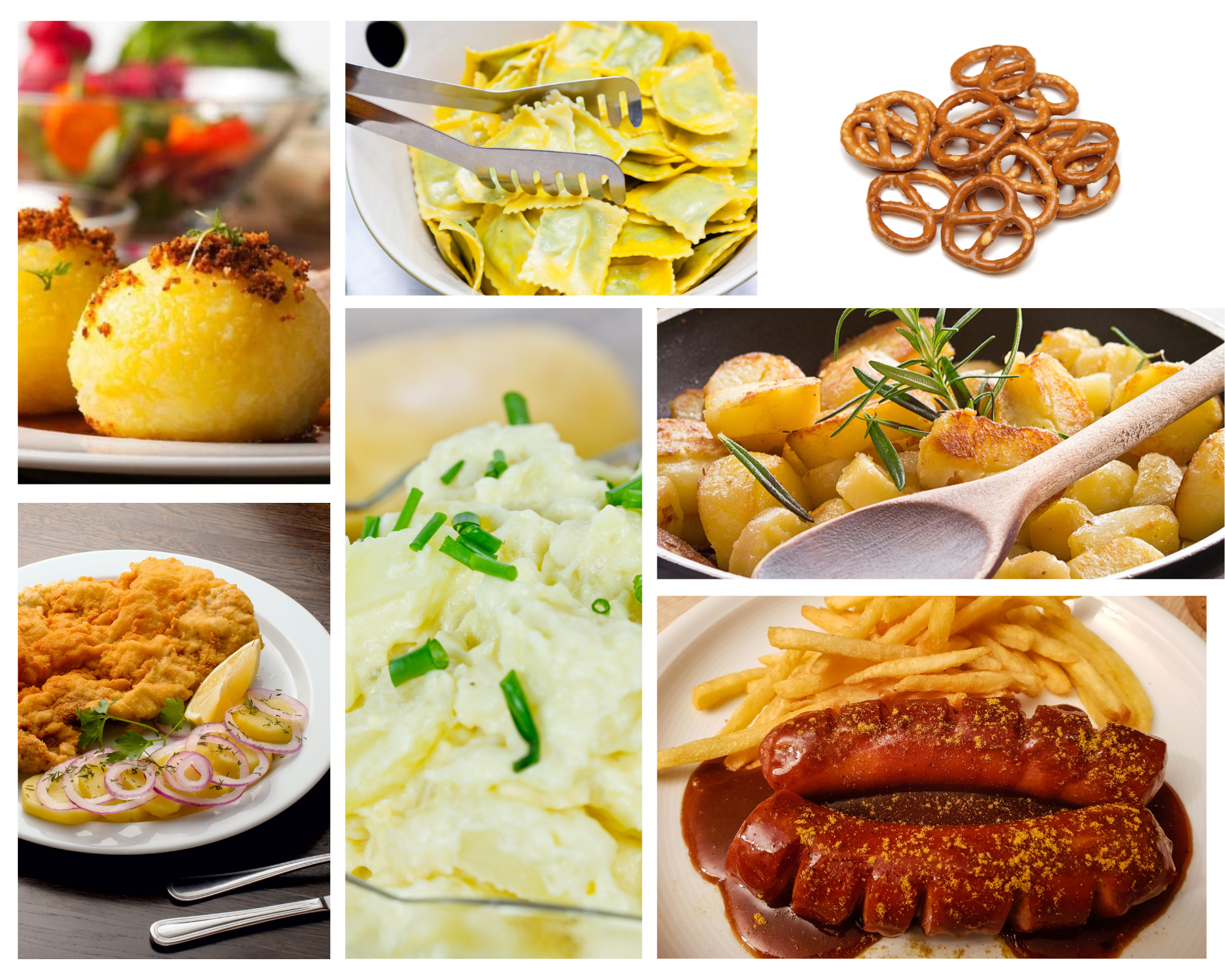
Photo Source : traveldreamdiary.com
Black Forest cherry torte: For an opulent finish, layers of rich chocolate cake, maraschino cherries, and whipped cream alternate, and are topped with additional cream. One of Austria’s national desserts is apple strudel, which has also been included into German regional cuisine. This well-known delicacy is made of buttery pastry stuffed with raisins, sugar, and cinnamon-flavored apples. A traditional Christmas dish in Germany is stollen. It is especially popular in Dresden and dates back to the 16th century. A flatbread topped with candied and dried fruits. You can also sprinkle powdered sugar on top of the bread after adding chopped or whole nuts.
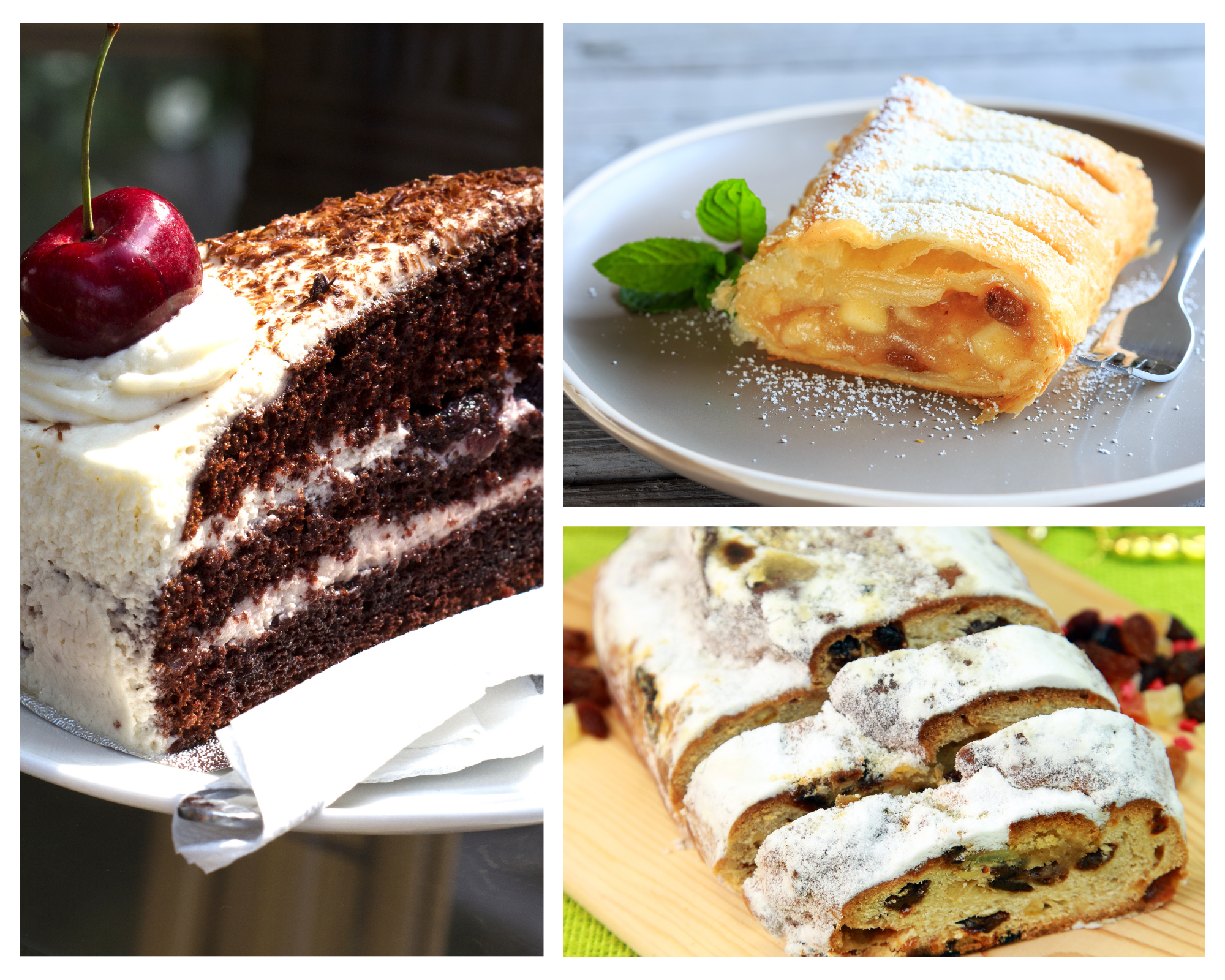
Photo Source : traveldreamdiary.com
Restaurants
Kachelofen: This inn has been around for more than 40 years and is well-known for its delicious Franconian food, which includes seafood, specialties, and hearty meat and pan-fried dishes. However, vegetarian options are also available, including veggie strudel and fresh mushroom or asparagus dishes. Freshly tapped local beers like Kellerbier or Rauchbier are available, along with superb Franconian wines from top wineries. The Franconian-Asian dish called Pelikan Bamberg’s crispy wood-fired pizza is called salino. The Eckerts dining at the theater with a view of the Hainpark Restaurant, as if they were on a ship: Fish and steak from Hoffmann’s
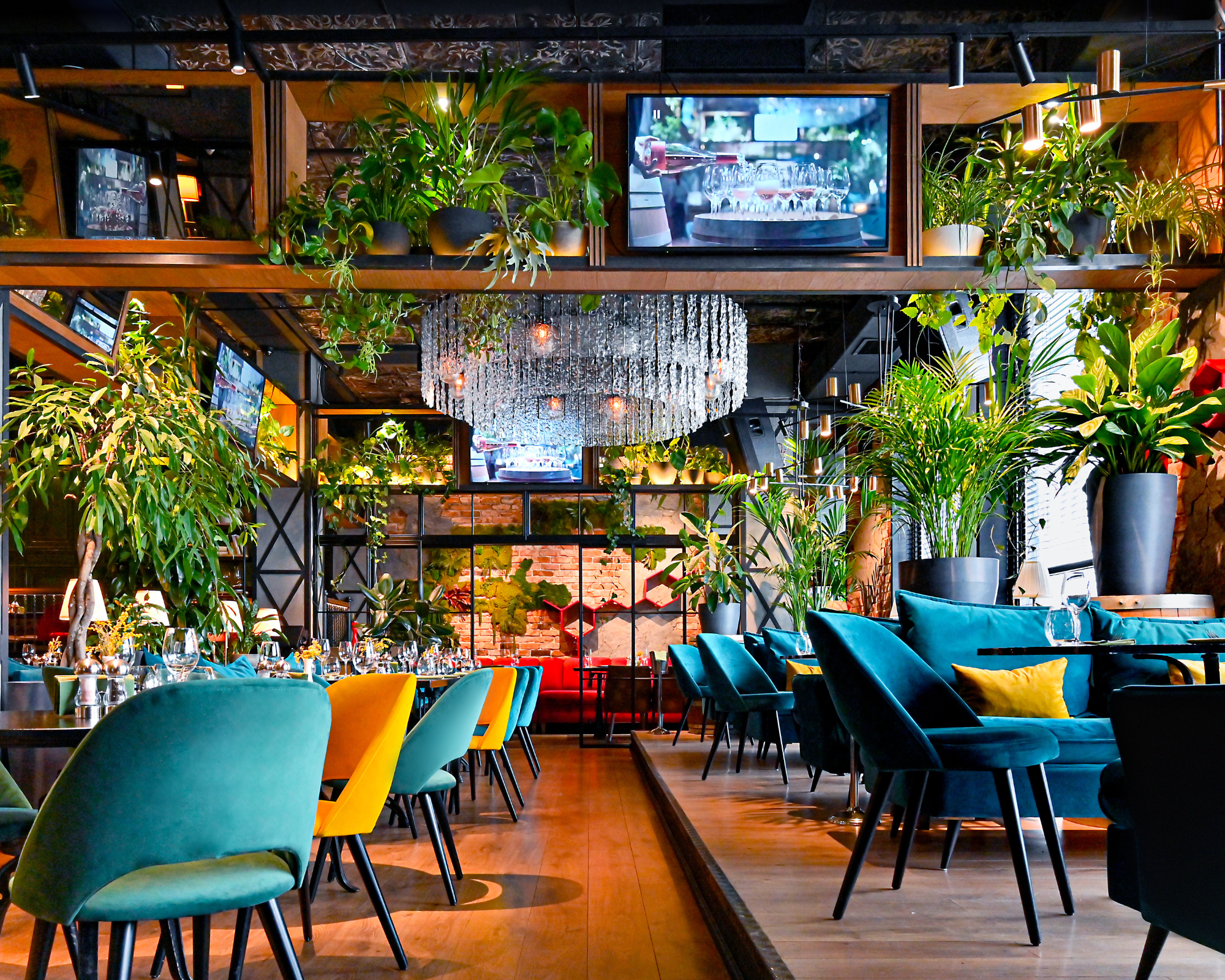
Photo Source : OanaAlexandra on canva.com
Franconian-style sports bar and restaurant, Brasserie Bamberg Domterrassen: The cathedral terraces in Bamberg offer Mediterranean flare with Greek classics, a selection of starters, and meat and seafood specialties. In this case, vegetarians are also catered to and can partake in a traditional Greek moussaka without any meat. A weekly menu that rotates frequently and incorporates regional and seasonal flavors offers a wide range of options. Highlight of the tour is the view of the Bamberg Cathedral. Specialties from Turkey at Efendi on Wilhelmsplatz Cocoon offers the best Asian food in a contemporary setting.
Saving Tips
- SELECT YOUR AIRPORT SMARTLY: If you’re traveling from North America, you probably have access to the finest airline offers into Frankfurt, which is home to the biggest international airport in Germany. Frankfurt, however, is over four hours distant from Munich and five hours away from Berlin.Given the high cost of gas and rail tickets, it can be worthwhile to spend a little bit more to fly closer to your destination.CHECK OUT A CHEAP AIRLINE: Think about low-cost carriers like Norwegian Airlines that provide flights from the US to Germany. Obtain a city tourism card; these are available in the majority of Germany’s largest cities. These include usually limitless public transit, meal discounts, and free admission to major museums and sites. These cards can help you save money if you intend to attend a lot of movies.
Invest in day passes for public transit if you plan to use it frequently while visiting a city. The cost of individual rides mounts up rapidly. SEASON” SAVINGS: Try to travel to Germany in June or September if at all possible. These are the best months to locate deals because the weather is still often extremely pleasant. Plan ahead: Although German trains are pricey, if you purchase your tickets at least a week in advance, you can obtain a saver ticket that will save you between 40 and 50 percent of the regular fee.
You can use the free Wi-fi and get online for free. In Germany, there’s free Wi-Fi in a lot of cafés, famous brands like McDonald’s and Starbucks, as well as in a lot of municipal buildings, libraries, parks, and museums.Keep an eye out for free museum days. In Germany, most museums have free admission on specific days or evenings. REMEMBER SCHOOL HOLIDAYS: There are five important school vacations in Germany for public schools: winter, spring break, summer, autumn, and Christmas.Embrace Big Bus or Hop-Off bus trips
Book your tours!
Tours: If you do not go by car and need to know more information about the tours, and things to see, we recommend these companies that are offering tours for any kind of activity you want to do and where you can buy trips much cheaper than if you buy them when you arrive at your destination. It is always good to be able to save some money!
Viator, Get Your Guide, Tiqets, City Sightseeing, Sesame, Sightseeing Pass, Contiki, Riviera Travel, CityPass: the best activities in town!
Shopping
In Bamberg, shopping entails meandering through the quaint old town streets. The pedestrian area of Bamberg is impressive due to its harmonious coexistence of boutiques, specialty stores, and fashion company branches. However, shopping in Bamberg is more than simply seeing the old town; the region’s farmers’ markets and traditional market days urge you to partake in healthful foods; the farm-gate sales shops in the gardening city, with their distinctive selection of fresh flowers and vegetables, are a must-visit.

Photo Source : OanaAlexandra on canva.com
Traditional stores and well-known brands invite you to stroll and shop in the old town of Bamberg. You can also take in the city’s distinctive ambience as a World Heritage Site. In Bamberg Land, you may also enjoy shopping adventures. Discover new things at the antique market or buy wholesome local produce at one of the many farmers’ markets in Bamberg: market days here provide a range of experiences. Bamberg Shop: Whether you’re looking for Bamberg guides or gifts, our shop has everything from beer mats to nativity scene guides.
Getting Around
In Germany, there’s no shortage of ways to get around the car. Traveling throughout the nation by train requires purchasing a ticket from Deutsche Bahn, as the railway network has been essentially nationalized. The states of Germany oversee the operation of ferries, suburban trains, metro networks, buses, and trams on a local level. Germany’s public transport networks are effective, safe, and reasonably user-friendly. Consequently, the image of Germany as a country of car enthusiasts is beginning to fade in several German cities. On a typical day in Germany, thirty million people travel by public transit throughout the nation. In Germany, there’s no shortage of ways to get around the car. Traveling throughout the nation by train requires purchasing a ticket from Deutsche Bahn, as the railway network has been essentially nationalized.The states of Germany oversee the operation of ferries, suburban trains, metro networks, buses, and trams on a local level.
German public transportation options include: As its name implies, the fastest public transit is the S-bahn (city rapid train). The metro’s German equivalent is called U-Bahn. Tram: These vehicles make several stops in city centers while operating on rails alongside conventional roadways. In many German towns and cities, buses constitute the lifeblood, connecting outlying locations and continuing long into the night when other modes of transportation cease to operate (though in larger cities, S-Bahn and U-bahn trains usually run continuously throughout the weekend). Regional trains come in two varieties: the slower, more stop-intensive RB (Regionalbahn) and the faster, less stop-intensive RE (Regionalexpress).
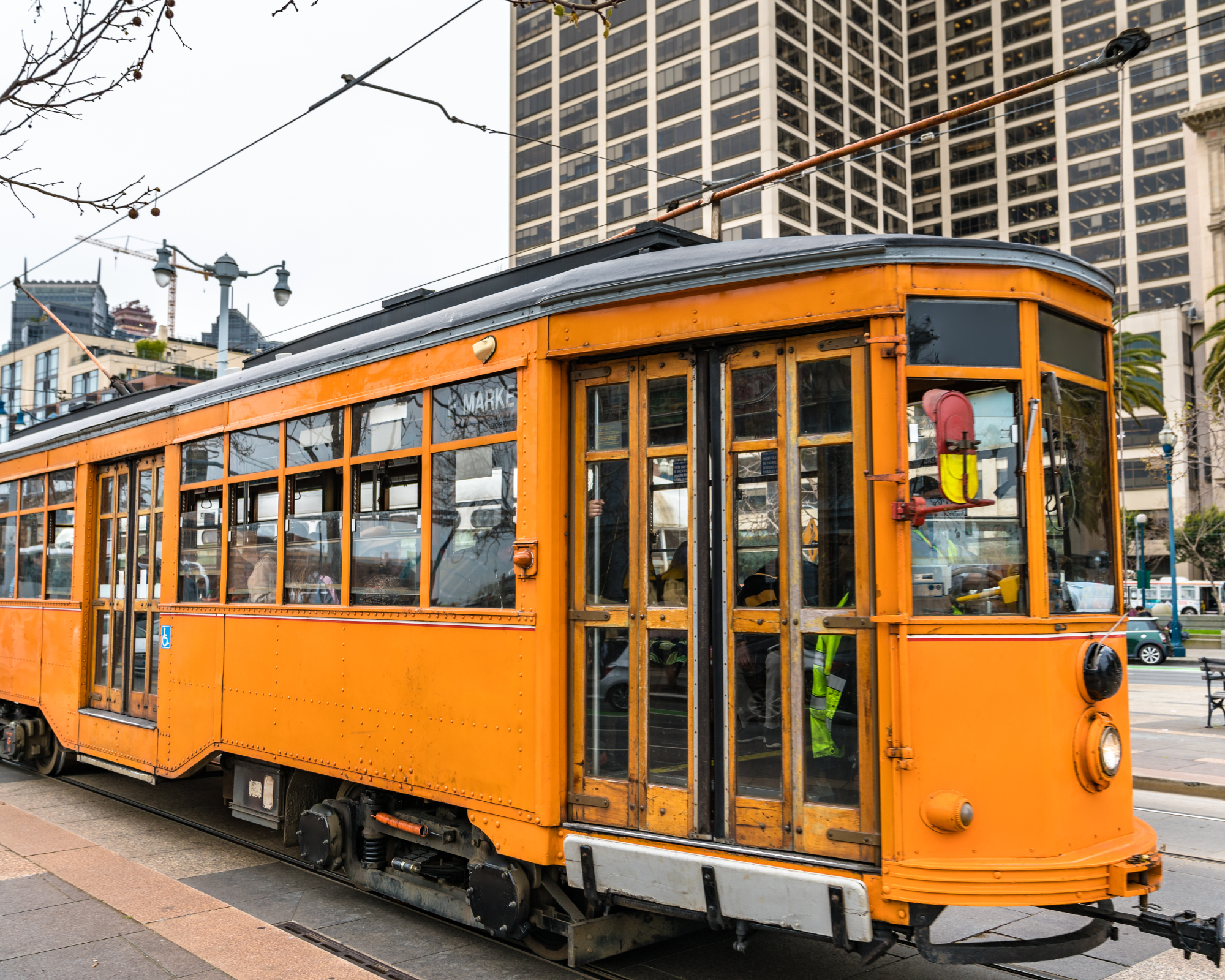
Photo Source : OanaAlexandra on canva.com
Week tickets, or Wegenkarte, are good for one week inside the designated zones.Longer-validity tickets (such as a month pass) are also available, however they often need to be bought from a ticket office official. Tickets for group days (Gruppentageskarte) Although tickets in Germany are normally expensive, if you are traveling in a party of three or more, the group day ticket actually provides excellent value for your money. They allow unrestricted travel within designated zones for a day or 24 hours, and are often good for parties of up to five persons. Your ticket will be printed with the phrase “Bitte entwerten” (please validate) if you are asked to do so. Place your ticket in the designated slot to verify it.One of the Entwerter validator machines, which are often located on the station platform or close to the ticket machines.

Photo Source : OanaAlexandra on canva.com
In general, Germany has three different kinds of train services that connect its largest cities: Intercity-Express (ICE) trains are fast trains with a top speed of 320 km/h.ICE trains feature a dining car and first-class seating. Express trains that are intercity (IC). First-class carriages and some form of catering are standard on IC trains. Intercity trains that make scheduled stops outside of Germany are called EuroCity (EC).However, not every Intercity-type train that leaves Germany is an EC train. International railroads Germany, which has nine neighboring countries, is located in the center of Europe. Consequently, German rail stations provide a large number of direct international trains. Several international lines are served by Deutsche Bahn’s high-speed service, the ICE, from nations like Austria, Belgium, France, the Netherlands, Switzerland, the Czech Republic, Denmark, Italy, and Poland.
Book your transport!
Rent a car!
Here you can find the best offers to rent the right car for you, as well as parking right in the airport: esky, Explorer, Centauro and intui.travel.
Getting here
Germany has 36 international airports in total, ranging in size from tiny airfields with a few routes and airlines to massive hubs like Frankfurt and Munich that handle tens of millions of people annually. There are sixteen international airports in all, twelve of which are regarded as major airports, handling more than fifty thousand travelers each. Frankfurt Airport, which handles over 500,000 aircraft operations and 70 million passengers annually, is the biggest in the nation. The primary segments of the airline industry are passenger, freight, charter, and ambulance services. Since its complete privatization in 1997, the formerly state-owned Lufthansa is by far the biggest airline in Germany.
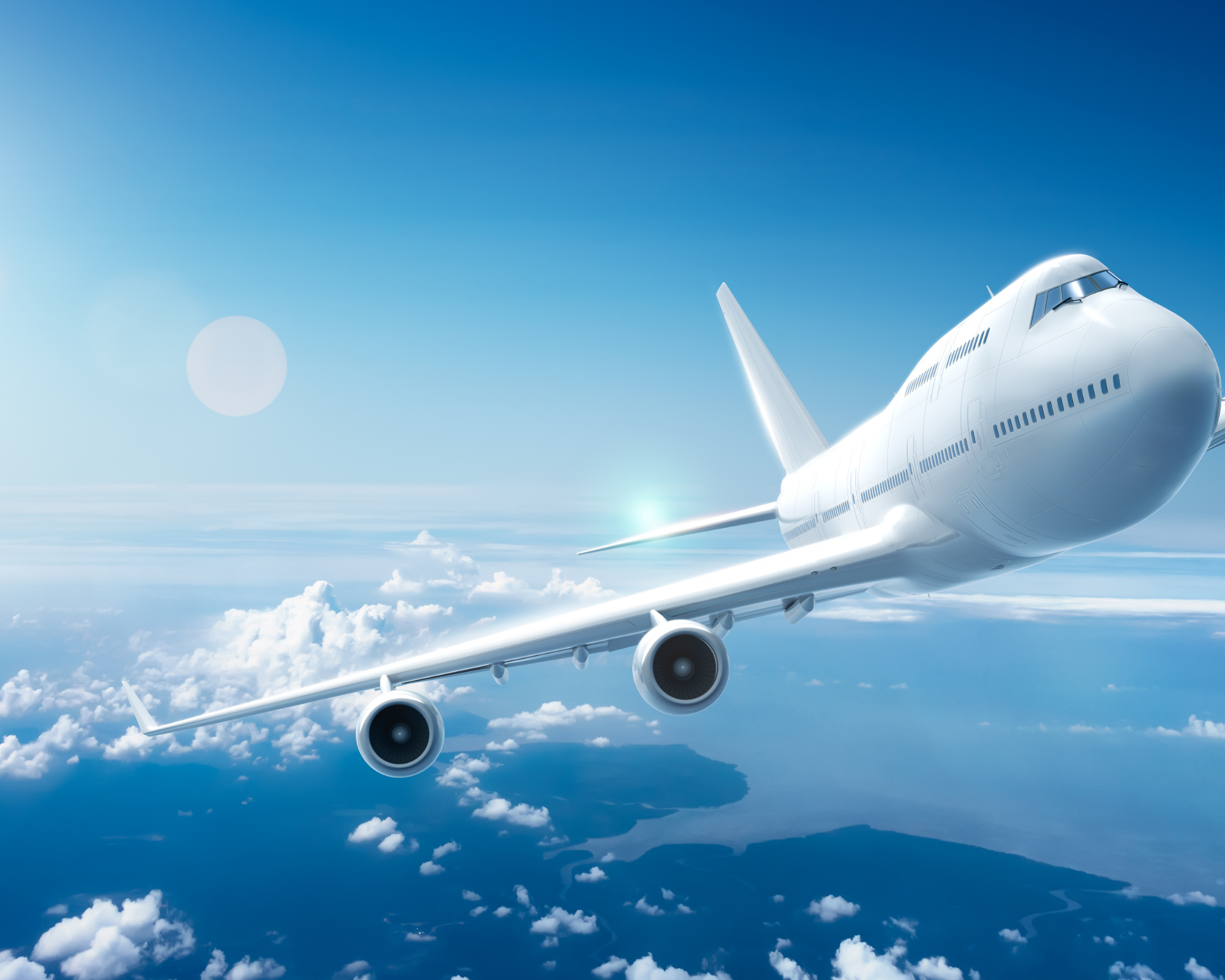
Photo Source : OanaAlexandra on canva.com
Germany’s busiest airport is located in Frankfurt. Düsseldorf Airport is in third place with 24,28 million passengers, while Munich Airport is the second busiest with 46,3 million passengers in 2018. The majority of the major airlines in your nation can transport you to Germany, as can Lufthansa, which has flights from/to 224 locations. Flights from Latin America, Central and North America, Africa, and Asia are available on Lufthansa.We collaborate with two businesses that are offering fantastic deals on bus and train tickets. Therefore, if you would rather go to Germany by bus or rail, you can find the ideal route here:
Book tour Flights!
If you have not found your desired flight, or you simply want more flight options to find the best and cheapest, we will help you with the best flight plans, where you will definitely find what you are looking for. With just one click you will find the cheapest flights to a wonderful destination!


